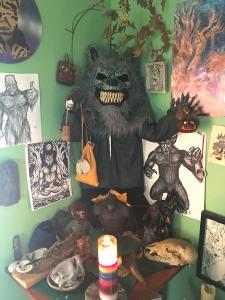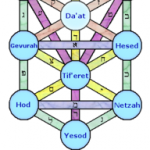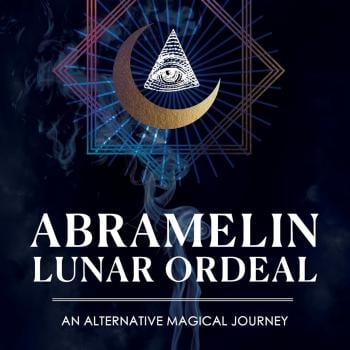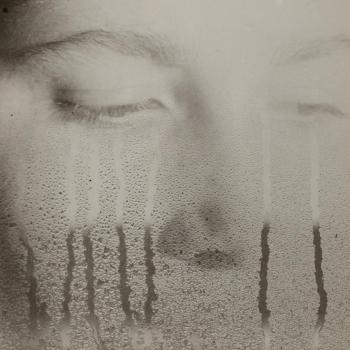Review of Werewolf Magick: Authentic Practical Lycanthropy by Denny Sargent

Denny Sargent (aka Aion 131) is a writer, teacher and practicing Ecclectic Ritualist with a very extensive magickal background. His biography states that he “was first introduced to Mythology and Magick in the suburbs and center of New York City where he grew up. He has since his early teens been accepted as a member of a number of initiatory groups including Pagan Way (and various other Pagan groups), Welsh Traditional Wicca, The GSS, the Typhonian OTO, QBLH, Order of Chaos, Cult of Tara and the Adinath Lineage of Tantrika. He is one of the founding members of the Horus/Maat Lodge and various other arcane cults too hideous to mention.”
Mr Sargent claims that his system of werewolf magick will
“… help free you from the constraints of a civilization that has forgotten the primacy of nature and denied the truth that we are animals. The goal of this book is not only to help you remember your innate wildness and animal powers, but to show you how you can unleash them. In the process, I truly believe, you’ll become happier, wilder, freer, more authentic, and more open emotionally, physically and psychically, for all of these are rooted in your Animalself, your inner wolf, the beast you have been forced to suppress and deny most of your life. I believe that when we connect to our Animalself and to nature, it restores our compassion for the Earth and drives us to care for it. Werewolf magick is a form of animalistic primal magick rooted in shape-shifting traditions, mostly from areas where wolves were apex predators and important spiritual beings. Werewolf magick focuses on magickal, psychological, and spiritual shape-shifting—shifting from a human mindset to a lower-cortex, centered feral consciousness—by unleashing the Animalself within and so manifesting as a ‘man-wolf ‘ or what we now call ‘werewolf’ forms.”
The book opens with Mr Sargent describing his own journey into werewolf magick. It is a largely channeled system, although it’s built on a bedrock of solid research. It has shamanic elements, although Mr Sargent emphasizes that he does not consider himself to be a shaman. While some people are content to follow systems put together by others, there are those practitioners who will devise their own systems – Mr Sargent is clearly one of those practitioners. One thing which I am very appreciative of is his insistence of being mindful of ethics while practicing – of not harming endangered animals and also of being aware of how animal parts were harvested so as to not incur karma.
Those readers expecting a Hollywood type transformation into a werewolf will be disappointed as the book offers something far subtler, but far more usable – access to the animal we carry within ourselves that has been all but forgotten in the modern world:
“There is something deeper about werewolves than memes and tropes and that is why we are fascinated with them. You will see that for much of human history werewolves have been seen as important spiritual entities, aspects of primal animistic magick, transformation and awakening to feral power. This is what this book is all about. People have always yearned to unleash the wild and free animal power locked within them, to gain prowess, strength, clarity and a wild joy in living as an integrated part of nature. This magick has been very common throughout human history until the industrial revolution when it was suppressed. Such magick can be traced all the way back to ancient times and still exists today. Through study and practice, you can discover ways to shift your consciousness and energetic or etheric body into a human-wolf union, a werewolf. This is possible on several levels: psychologically, energetically, magically and spiritually.”
Mr Sargent traces shapeshifting into apex predators back to petroglyphs and pictographs as well as paleolithic cave art dating to around 30-35,000 years ago. He discusses shapeshifting legends from around the world involving not just wolves but tigers, foxes, raccoons, and jackals.
Naturally I was very drawn to Mr Sargent’s summary of ancient Greek traditions:
“According to ancient Greek historians, werewolf cults predated worship of the Hellenic gods. The sacred mountain-top sanctuary on Mount Lykaion in Arcadia, Greece was likely the oldest center of wolf and werewolf worship in Greece. It was dedicated to a very ancient wolf god thought to have been named Lycaeus (‘wolf god,’ sometimes written as Lykeios). In later Hellenistic times, ‘Lycaeus’ becomes attached to the names of other gods. For example, the god governing the temple changed and became Zeus Lycaeus, another temple nearby honored Pan Lycaeus, and Apollo Lycaeus was worshipped at several other shrines in Greece. … ”
It appears that the most widely venerated of these was Apollo Lycaeus (Wolf Apollo):
“Famous statues of ‘Wolf Apollo’ were erected at Delphi and at his temple in Athens. The Apollo Lycaeus cult also had a temple in conjunction with the werewolf cult of Soranus in Italy.”
Another relevant Greek god was Ares:
“It is worth noting that werewolf cults were also prevalent in several warrior priesthoods and martial brotherhoods, such as those of Ares and Mars, gods that found wolves to be sacred. Wolf and werewolf symbols were venerated in their temples and worn proudly by these martial cult members and associated soldiers.”
Mr Sargent refers to gods from numerous traditions that he works with, but I gravitate to the Greek ones. Not surprisingly given popular werewolf lore, the moon goddess is important – Hekate for the dark moon, Selene for the full moon, and Artemis for the crescent moon. Also important is the Earth Mother Gaia who is the source of all things: “As wild beings, we come from her, live within her, and subsist on what she gives us.”
Mr Sargent explains the difference between transformation fantasy and reality:
“The myth of transforming into a werewolf is that you become a real creature that involves a painful physical change of the flesh and bones, into the form of a wolf. This curse of transformation comes from being bitten by a werewolf or is acquired from sorcery or a demon. This actual bone and flesh ripping physical transformation is, as far as I know, a fantasy.
The transformations we will be working on in werewolf magick aren’t violent. Through intense physical, meditative, magickal, and physiological actions one calls forth the deepest primal part of the unconscious mind—the Animalself—in the form of a wolf spirit. This is aided by accessing the eightyfour percent of genetic material shared between humans and canines. Shapeshifting is done by focusing and directing the Animalself to psychologically, spiritually and physically come forth so one can manifest or ‘wear’ the astral form of the Animalself in the form of a werewolf. … ”
Mr Sargent states that the aim of werewolf magick is to reap the benefits of tapping into the Animalself while maintaining contact with our inherent humanity:
“Empowering, expanding and balancing Instinct, Intuition and Insight are the key practices of werewolf magick on a daily basis. Skill at this helps us remain rational while at the same time being immersed in the sensory tsunami of the Animalself, our inner wolf.”
Elsewhere, he explains:
“Our human brain is a result of eons of evolution and this is especially germane to the ‘primitive brain’ (the ‘reptile mind’ described by Carl Sagan) or lower cortex. This is where the Animalself exists and where to access your inner wolf. This is the science behind shape-shifting.”
Important part of any system are the magickal tools which are used. As an example, Mr Sargent’s werewolf magick altar,
“… is about four years old and has grown quickly as the wolfish feral gods gift and guide me. Present are the werewolf god Faunus Lycan and the goddesses Gaia, Artemis, Selene, and Hekate, while the coyote skull centers the energy. The mask is actually used by me for Halloween (Samhain) both ritually and for howling fun with trick-o-treaters. Most of the images and charms here were given to me by fellow werewolf cultists or fans and some were bequeathed to me, such as the wolf fang, fur, bag of runes, and feral charms. In front is a werewolf magick spell candle … “

Many of the spells involve the use of what Mr Sargent calls, “Werewolf Lingo”:
“The following sounds are some of the most useful and common nonverbal communicative tools of werewolf lingo that are referenced in many spells and rituals. Be aware that learning to vocalize unusual sounds takes time and will stretch your vocal cords. … “
Blending in with this,
“All invocations with words used in werewolf magick work should be growled.”
Mr Sargent strives for authenticity and is very detail oriented. As an example, in a ritual performed while camping in the woods, he advises:
“Check the place out in full daylight and wander about the area where you will be doing this ritual so you’ll know it. Use pee, just like a wolf would, to mark around your ‘territory’.”
While this isn’t something that most magicians and witches would do in marking out a ritual space, it makes perfect sense for someone working shapeshifting magick. Endearingly, at the conclusion of the ritual, he advises:
“Don’t forget to leave the site as you found it; a good wolf is an eco-friendly wolf.”
Conclusion
I enjoyed this book as it outlines a channeled path which has worked very well for Mr Sargent and others who’ve followed in his footsteps. I would encourage readers who wish to work werewolf magick to try this system at least as a starting point. Once results are being obtained, the system can either be used as is, or optimized for individual requirements. Those wishing to work shapeshifting magick with animals other than wolves will doubtless also find inspiration in the book to craft their own path.
Tony Mierzwicki
Author of Hellenismos: Practicing Greek Polytheism Today and Graeco-Egyptian Magick: Everyday Empowerment.
















